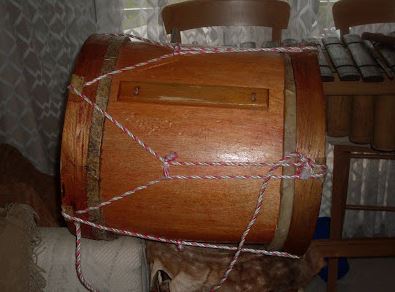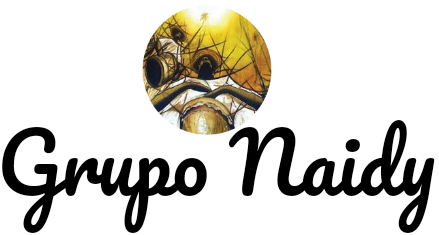Traditional Instruments
From the Southern Pacific Coast of Colombia
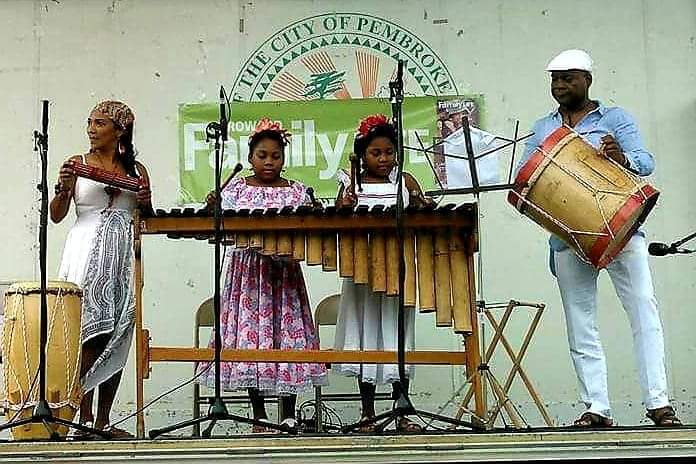
The typical marimba ensemble has 3 or 4 singers as in the picture above. In some Colombian communities such as Timbiqui, Cauca, Tumaco or Narino, they utilize 5 or 6 singers.
Below are the typical instruments of a marimba ensemble from the Southern Pacific Coast of Colombia.
Marimba of Chonta (Marimba de Chonta) are made of 24 wood planks from the “chonta” palm tree which is found on the Pacific Coast of Colombia.
There are many varieties of “chonta” and some players of the marimba prefer some varieties over others because of the unique sounds produced.
The marimba is played with wooden sticks made of a bamboo type which have natural rubber at the top. The natural rubber is extracted from rubber trees. A marimba of 24 planks is played by two people.
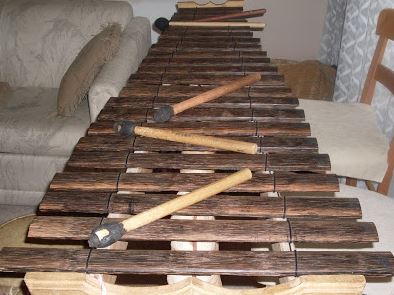
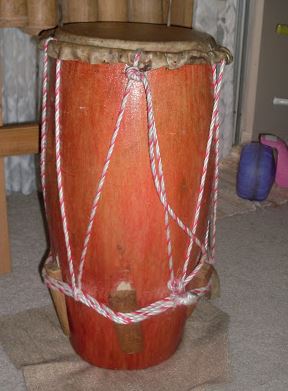
On the left if the Male Cununo, or Cununo Macho, this instrument is plays along and in conjunction with the Female Cununo which is pictured to the right.
The inside of both instruments is hollow wood that is in the form of a cone. The bottom of each instrument is made of wood.
The top of the male instrument is made from male wild deer skin, while the top of the female instrument is made from female wild deer skin.
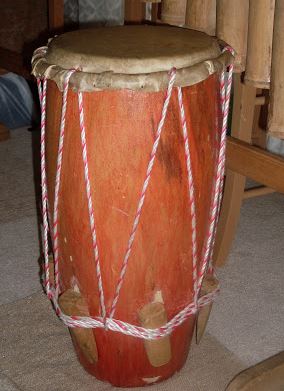
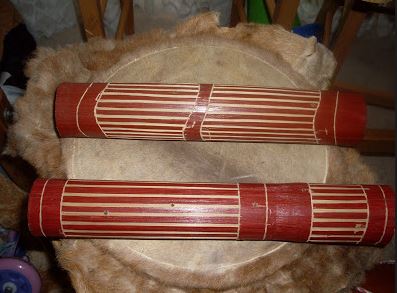
The Guazas to the left are a small percussion instruments made of a sort of bamboo with seeds inside and are normally executed by the female voices of the group.
The rhythm and dance most traditionally performed with these instruments in the Currulao which is led by a “Marimbero” or Marimba player.
Currualo is the most representative rhythm of the southern Colombian Pacific coast, however, other rhythms practiced and performed are: Jugas, Bundes, Pango, Patacore and Bereju rhythms.
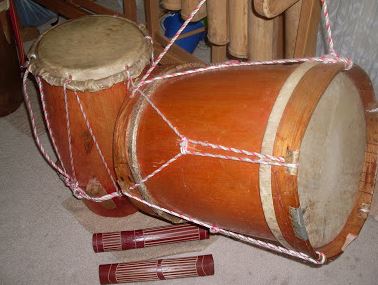
On the left if the Male Bombo or Bombo Macho. On the right is the Female Bombo or Bombo Hembra.
Bombos are made from a specific type of tree on the Pacific Coast of Colombia. The pulp is extracted during production and only the hollow trunk is used.
The wood is light and two types of skins are used: the Venado Deer skin and the Tatabro wild pig skin. Two rings make the final tie with string or bejuco.
